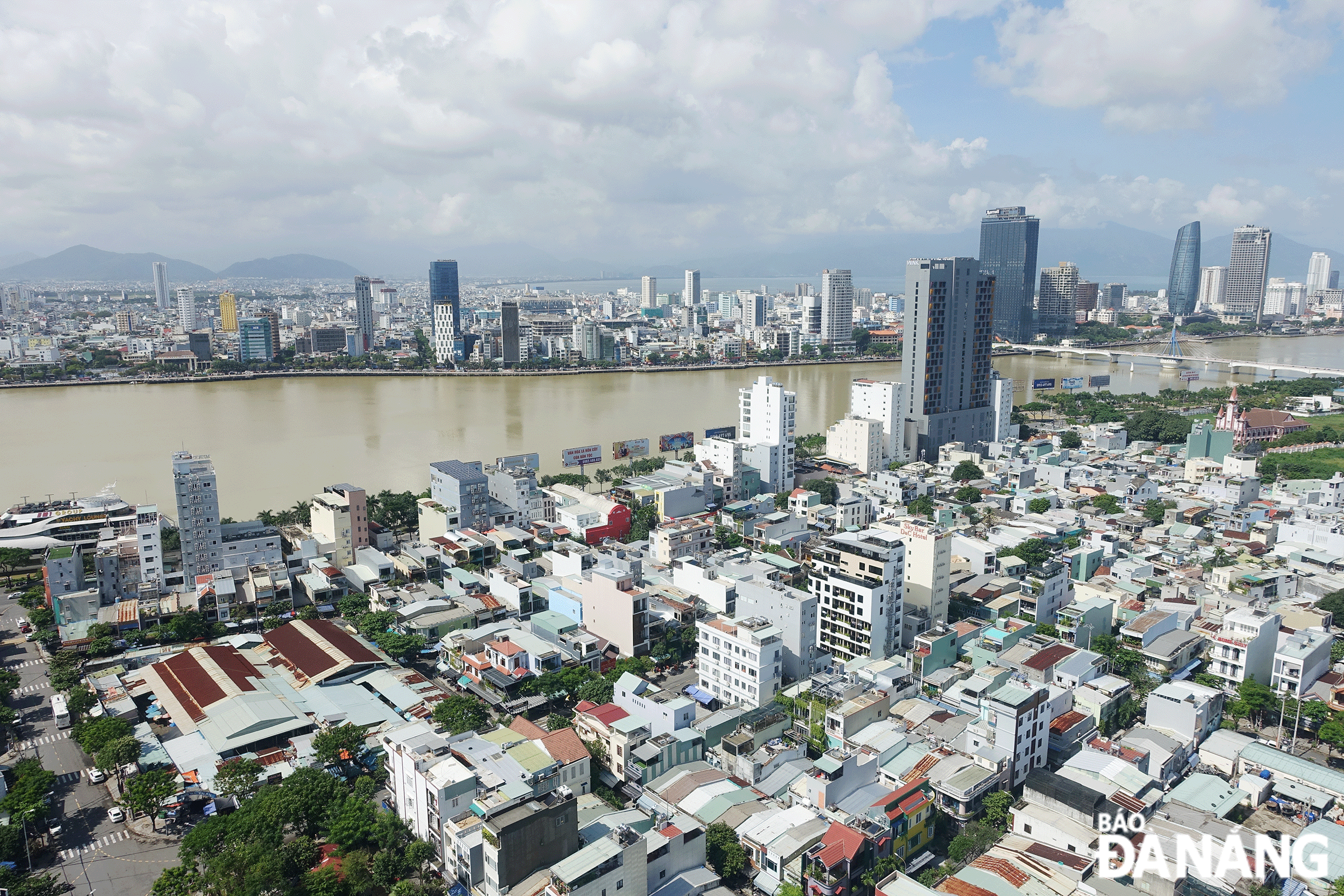Da Nang urban planning: Promoting socio-economic development
The Da Nang Master Plan and subdivision planning play the role of architectural framework and serve as an important basis for the city to invest in many projects, opening up vibrant development.
 |
| The Da Nang urban centre. Photo: N.T |
Reconstruction and investment in new urban areas, enhancing green space
According to the Da Nang Department of Construction, the project of adjusting the Da Nang Master Plan by 2030, with a vision toward 2045, orients the reconstruction of old urban areas with poor infrastructure, low land use coefficient into high-rise urban areas and receive corresponding infrastructure investment.
New urban areas will be developed in the direction of high-rise buildings and apply new standards for residential units with an area of up to 28m2/person.
In addition, criteria will be established to control development and redevelopment, improve land use efficiency for urban areas such as average land use coefficient, average construction height, and construction density.
Along with the ecological zone to control development and preserve forests and the city's natural ecosystem, central green core will be set up to enhance natural green spaces in urban areas and the system of green spaces and water surfaces through a network of parks and linear green corridors to form a continuous green structure throughout the city.
Director of the Da Nang Department of Construction Phung Phu Phong said that the project of adjusting the Da Nang Master Plan by 2030, with a vision towards 2045, inherits and builds a smart city architecture for Da Nang with 6 pillars (governance, economy, environment, life, citizens and transportation) and 16 priority areas as well as laying the initial foundation to organise in-depth research into zoning planning for urban contemporary urban models such as aerotropolis, seaport and university urban areas.
The project also sets out a complete infrastructure development strategy for airports, seaports, railways, waterways, roads and dynamic project groups on technical and socio-economic infrastructure as a driving force to promote the city’s socio-economic development. In addition, many ideas and solutions have been researched, considered and integrated in the project to address the limitations and weaknesses that have been revealed in the city’s urban development process.
After 3 years of implementing the project of adjusting the Da Nang Master Plan by 2030, with a vision towards 2045, the city has basically completed many main tasks. In particular, the city has completed reviewing and adjusting the planning of the Da Nang International Airport and the Urban Development Programme.
The city has coordinated with ministries and agencies to implement the city’s framework infrastructure system such as the Da Nang International Airport, Lien Chieu Port and other essential projects. The city has been reviewing, adjusting and planning 19 subdivisions (urban and functional), of which five out of the 19 zoning plans have been approved.
Many projects have been licensed and started construction
The zoning plan for areas along the Han River and the eastern bank has determined the location and scale of underground works, removing difficulties and obstacles in construction investment procedures.
The Da Nang Department of Construction affirmed that determining the location and scale of underground works in the planning project aims to remove difficulties and obstacles in implementing projects in the area, contributing to promoting the city’s socio-economic development.
In addition, the above-mentioned zoning plan also stipulates parking areas for buildings that have 9 floors or more high, whilst commercial centres, supermarkets, nightclubs, and restaurants with a business area of 500m2 or more in Hai Chau, Thanh Khe, Son Tra and Ngu Hanh Son districts must ensure a 20% increase in parking area compared to the previous requirements. Investors must increase the parking area if they want to rise the scale of the project.
This regulation helps meet the increasing parking demand in inner-city areas, reduces pressure on the urban technical infrastructure system, but still avoid affecting ongoing projects.
Since the cited zoning plan was approved, the districts’ authorities have approved the detailed planning of investment projects in urban areas and high-rise housing, large commercial and service centres, and other educational, medical, cultural, social, and green park projects. Detailed planning projects are appraised and approved by the the district-level People's Committees on the basis of functions, criteria for urban planning land use and other regulations on landscape architecture.
Since the beginning of 2024, the municipal Department of Construction has issued construction permits for 21 projects and work items with a total investment capital of about VND 20,000 billion, including 17 investment projects in urban areas along the Han River and the eastern bank of the Han River. Besides, there are 6 projects that are going through procedures related to construction licensing.
Many projects of hotels, luxury apartments, offices for rent and shopping center have started construction in Hai Chau, Son Tra, Ngu Hanh Son districts, bringing excitement in construction activities, attracting investment and tourism flows to the city and contributing to promoting the city’s socio-economic development.
Reporting by NAM TRAN - Translating by A.THU